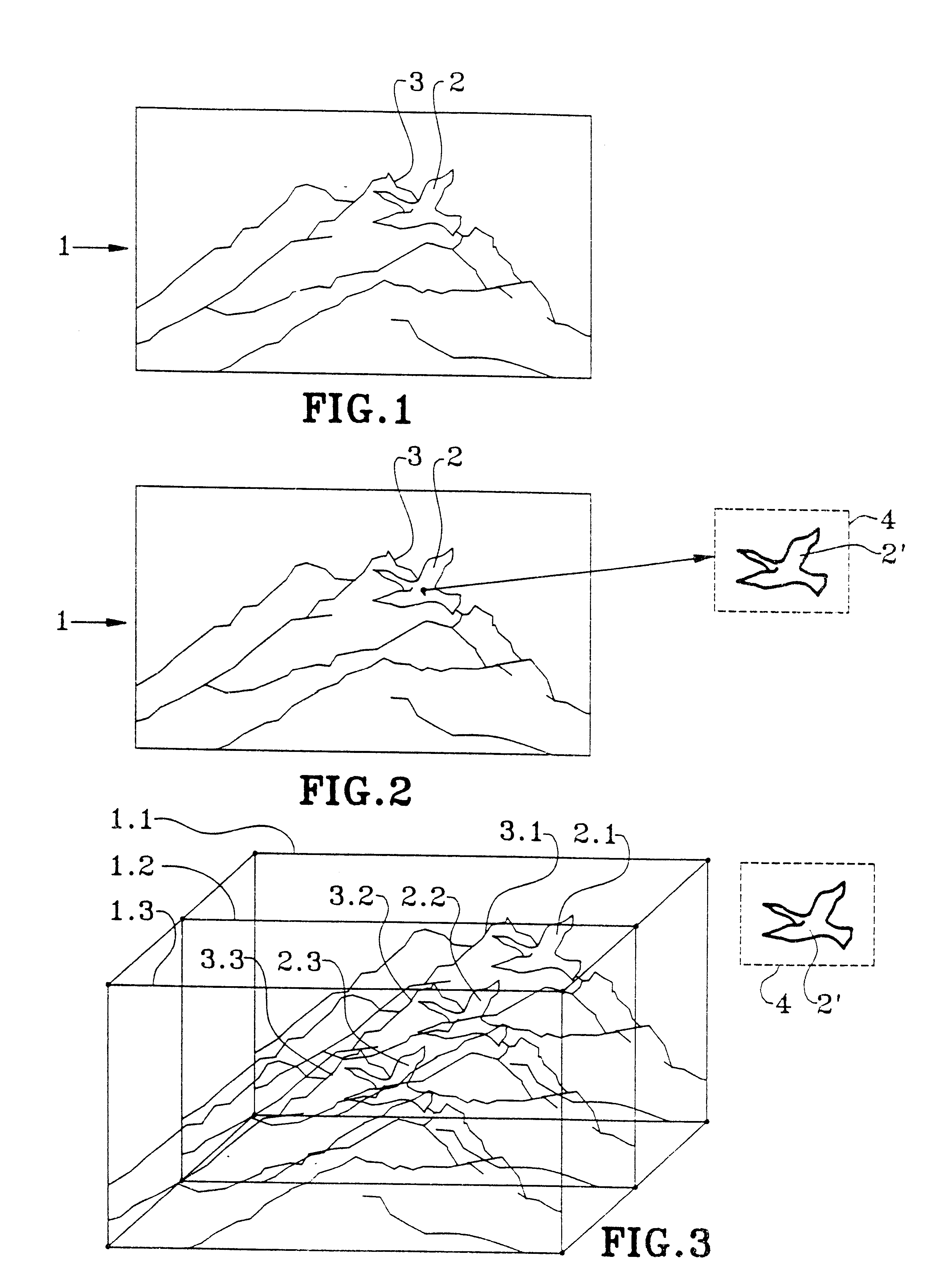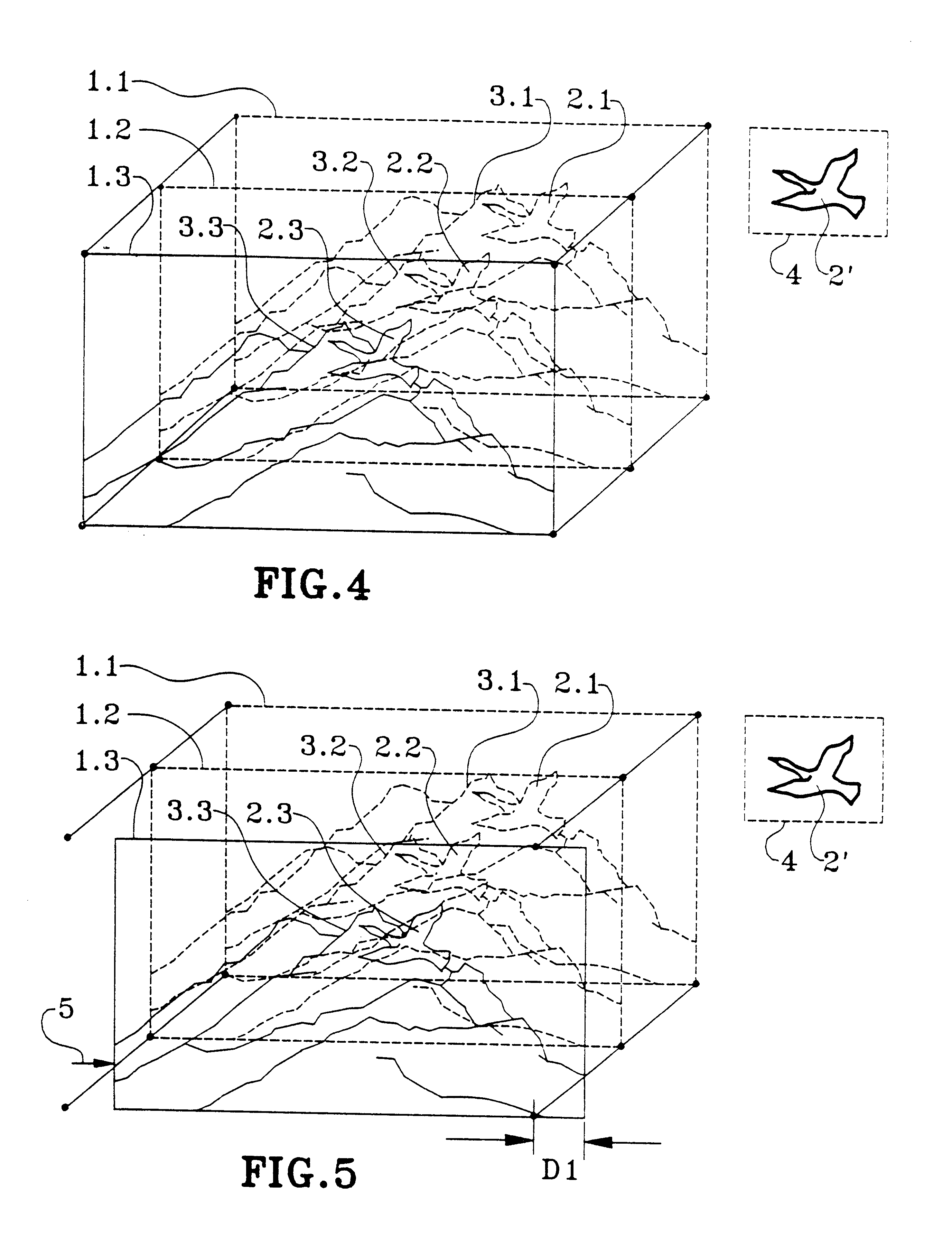Method of transforming images into stereoscopic images, and images and image sequences obtained by said method
a technology of transforming images and stereoscopic images, applied in the field of stereoscopic images, can solve the problems of not being able to implement unable to achieve a simple two-dimensional image look-at-it-all, and unable to achieve a single-dimensional image look-at-it-all, so as to achieve a minimal reduction in the quality of the image and the effect of easy image look-at-i
- Summary
- Abstract
- Description
- Claims
- Application Information
AI Technical Summary
Benefits of technology
Problems solved by technology
Method used
Image
Examples
Embodiment Construction
In FIG. 1, there can be seen an image 1 showing a bird 2 flying in the foreground and mountains 3 in the background. In the example shown in FIGS. 2 to 10, a 3D effect is given to the image by detaching the bird 2 which will appear to be flying in front of the mountains 3. Naturally this is merely a non-limiting example, and the method of the present invention applies to any subject. However, other information concerning image depth, e.g. such as complying with the rules of perceptive, or having an image that is slightly less sharp, or that is mistier and / or bluer for a remote background all accentuate the perception of a three-dimensional image by the human brain.
The image 1 of FIG. 1 may be a matrix image (a "bit map" in computer terminology) at resolution that is at least as good as that of the desired stereoscopic image. For example, it may be an image created by means of software for creating and editing bit-map graphics images, a digitized photograph, or vector graphics conver...
PUM
 Login to View More
Login to View More Abstract
Description
Claims
Application Information
 Login to View More
Login to View More - R&D
- Intellectual Property
- Life Sciences
- Materials
- Tech Scout
- Unparalleled Data Quality
- Higher Quality Content
- 60% Fewer Hallucinations
Browse by: Latest US Patents, China's latest patents, Technical Efficacy Thesaurus, Application Domain, Technology Topic, Popular Technical Reports.
© 2025 PatSnap. All rights reserved.Legal|Privacy policy|Modern Slavery Act Transparency Statement|Sitemap|About US| Contact US: help@patsnap.com



